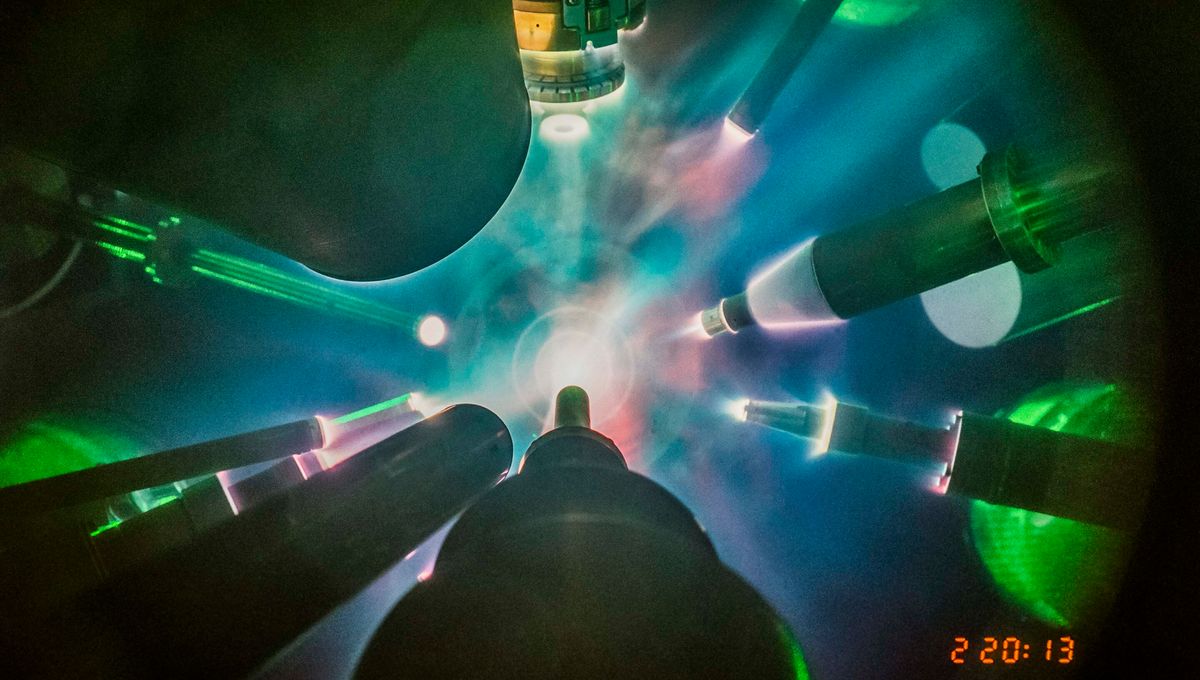
Getting out more energy from nuclear fusion is a fundamental step in making it the energy source of the future. So far, it has been achieved only in one system – the inertial fusion approach of the National Ignition Facility (NIF). New research on a similar approach shows that the NIF might have competition in the realm of inertial fusion.
Nuclear fusion is what powers stars, the most common source of energy in the universe. And yet, we can’t easily recreate it here on Earth because we cannot compress hydrogen in the same way that gravity does in the core of stars. To bypass that requirement, the inertial fusion approach uses lasers to compress a pellet of fuel so much that it ignites.
The NIF uses an indirect method. Their system has some of the most powerful lasers in the world hitting a container called a hohlraum, getting converted to x-rays. It’s the x-rays that then compress the pellet of fuel and release energy. The method presented in new research from scientists at the University of Rochester approached fusion by directly slamming the pellet of fuel with lasers.
They have demonstrated what they are calling the spark plug. The laser system is about 100 times less powerful than the one used by NIF and still, it was able to compress the fuel capsule and start nuclear fusions. It was a small fraction of energy but it showed that it was not just the plasma being hot, there was fusing plasma.
“Generating more fusion energy than the internal energy content of where the fusion takes place is an important threshold,” lead author of the first paper Dr Connor Williams, now a staff scientist at Sandia National Labs in radiation and ICF target design, said in a statement. “That’s a necessary requirement for anything you want to accomplish later on, such as burning plasmas or achieving ignition.”
The work used the OMEGA laser, the largest academic laser in the world. Still, it is far from the power the NIF has. The team was intrigued to model what they could achieve with such a laser and simulations are extremely promising.
“If you can eventually create the spark plug and compress fuel, direct drive has a lot of characteristics that are favorable for fusion energy compared to indirect drive,” said the lead author of the second paper Dr Varchas Gopalaswamy. “After scaling the OMEGA results to a few megajoules of laser energies, the fusion reactions are predicted to become self-sustaining, a condition called ‘burning plasmas.’”
While breakthroughs and record-breaking successes are piling up with this and other methods, the road ahead for viable commercial nuclear fusions is very long. An experiment such as this presents valid alternatives to tested methods.
The papers are published by Nature Physics, here and here.
Source Link: Nuclear Fusion "Spark Plug" Created In New Technical Breakthrough